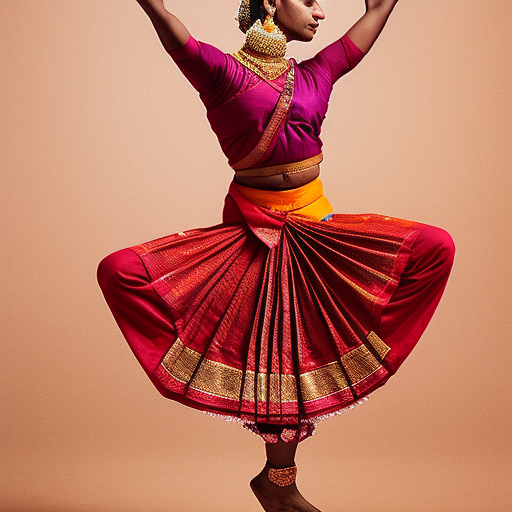Bharatanatyam: A Traditional Indian Dance Form
Bharatanatyam is a classical Indian dance form that originated in the state of Tamil Nadu. It is one of the oldest and most popular dance styles in India, known for its intricate footwork, expressive gestures, and vibrant costumes. This dance form is deeply rooted in Hindu mythology and is performed to narrate stories from ancient scriptures.
History and Evolution
Bharatanatyam has a rich history that dates back over 2,000 years. It was initially performed in temples as a form of worship and devotion. Over time, it evolved into a sophisticated art form and gained recognition as a classical dance style. In the 19th and 20th centuries, Bharatanatyam faced significant challenges due to its association with devadasis (temple dancers) and was even banned for a period. However, it experienced a revival in the mid-20th century, thanks to the efforts of prominent dancers and scholars.
Elements and Technique
Bharatanatyam is characterized by its unique blend of expressive hand gestures (mudras), intricate footwork (adavus), and graceful body movements. The dance form focuses on three main elements: nritta (pure dance), nritya (expressive dance), and natya (dramatic dance). Nritta involves rhythmic patterns and complex footwork, while nritya emphasizes storytelling through facial expressions and body postures. Natya combines both nritta and nritya to convey emotions and narratives.
Costumes and Jewelry
Bharatanatyam costumes are known for their vibrant colors and intricate designs. Female dancers typically wear a traditional attire called a “pattu pavadai,” which consists of a long skirt and a fitted blouse. The skirt is adorned with gold or silver borders and pleats, while the blouse is embellished with intricate embroidery. Dancers also wear a dupatta (scarf) draped over one shoulder. Male dancers usually wear a dhoti (loose garment) and a shirt.
Jewelry plays a significant role in Bharatanatyam, enhancing the visual appeal of the performance. Female dancers wear elaborate temple jewelry, including necklaces, earrings, bangles, and anklets. These pieces are often made of gold and feature intricate designs inspired by Hindu mythology. The jewelry not only adds beauty but also produces melodious sounds that synchronize with the dance movements.
Significance and Cultural Impact
Bharatanatyam is not just a dance form; it is a means of storytelling, spiritual expression, and cultural preservation. It serves as a medium to convey ancient myths, legends, and religious stories to audiences. The dance form also plays a vital role in promoting Indian culture and heritage globally. Over the years, Bharatanatyam has gained international recognition and has been embraced by dancers and enthusiasts worldwide.
Training and Education
Learning Bharatanatyam requires years of dedicated training under the guidance of a skilled guru (teacher). The training involves rigorous practice of adavus (basic steps), abhinaya (expressions), and repertoire (dance compositions). Students also learn the theoretical aspects of Bharatanatyam, including its history, mythology, and music. Many dance schools and academies offer formal education in Bharatanatyam, providing a platform for aspiring dancers to hone their skills.
Contemporary Adaptations
While Bharatanatyam has a strong foundation in tradition, it has also evolved to incorporate contemporary themes and styles. Many choreographers and dancers have experimented with fusion elements, blending Bharatanatyam with other dance forms and genres. This fusion has helped bring Bharatanatyam to a wider audience and has contributed to its continued relevance in the modern era.
In conclusion, Bharatanatyam is a classical Indian dance form that has a rich history, intricate technique, and cultural significance. It continues to captivate audiences with its expressive storytelling, mesmerizing footwork, and vibrant costumes. Through its timeless beauty and grace, Bharatanatyam remains an integral part of India’s artistic and cultural heritage.












